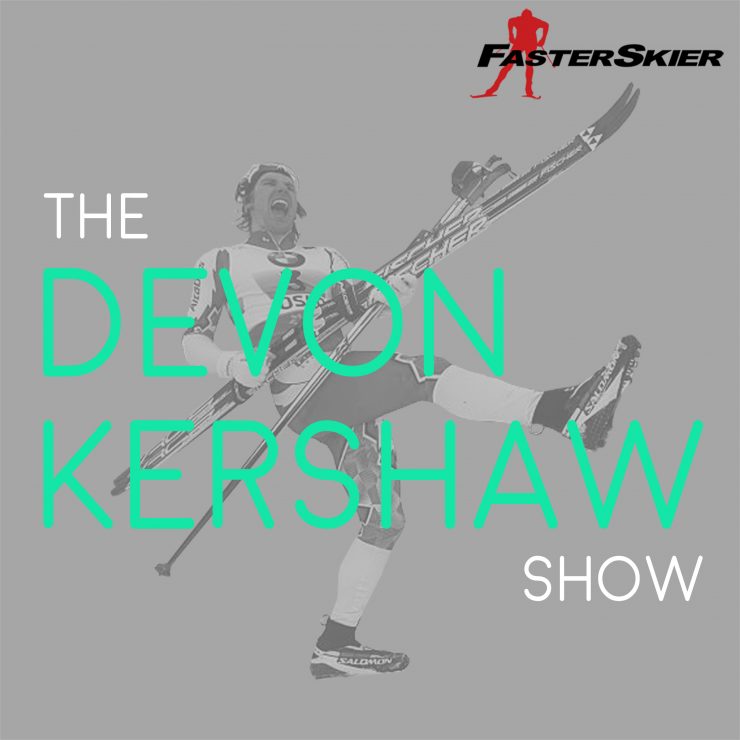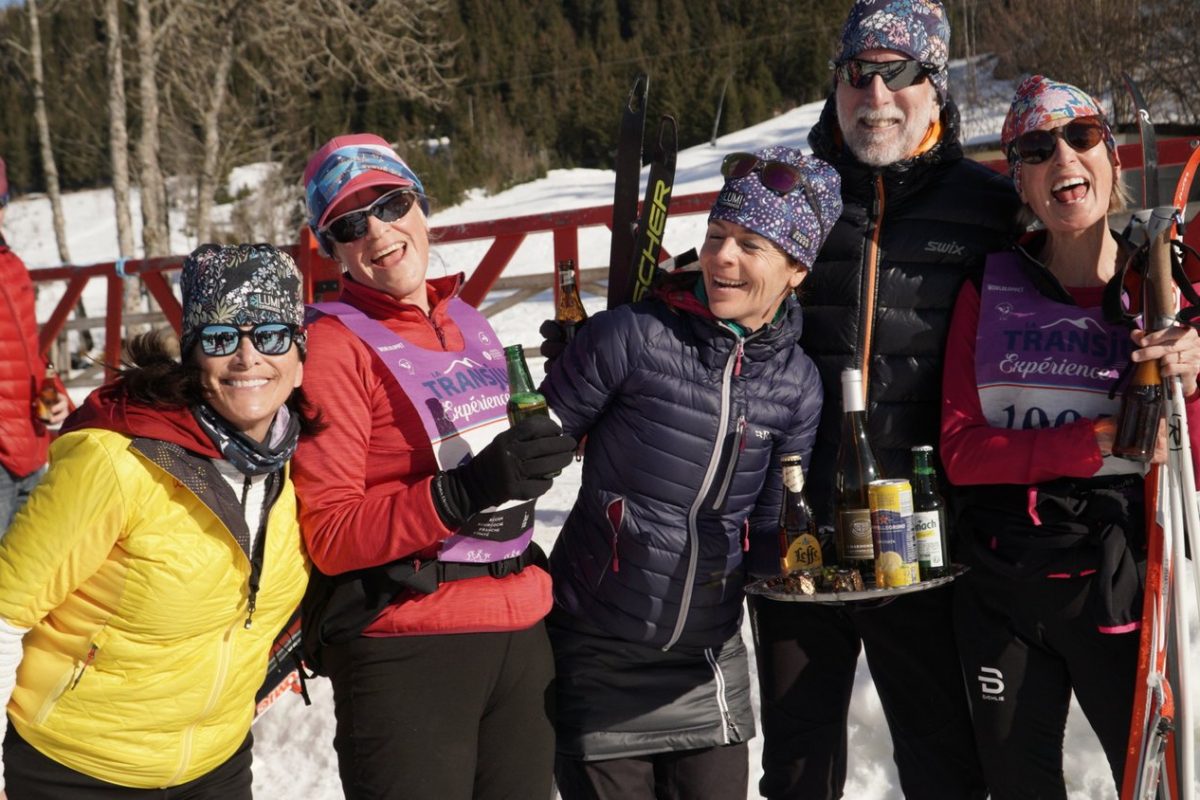
With the help of some good snow and skiing conditions, this year’s Continental Cup could be one of the most successful. This is why:
1) The Nor-Am and Super Tour schedules mesh so as to encourage maximum participation in both series from both Canadian and US athletes.
2) With a large number of athletes competing to make it onto the Olympic Team, the best racers will be sure to make it to every race possible and the competition will be stiff. This will most likely result in a very fluid scoreboard for both the Continental Cup and Super Tour titles, and will hopefully end with a last-race rivalry for both.
3) The advent of additional and different events in the schedule allows for individual and national growth.

USSA Nordic director, Jon Farra, is on a mission to ensure the growth of nordic competition in the U.S. remains healthy and on a steady upward trend. This is the second season in a number of years that he was able to work with the directors in Canada, with whom he says he has a “really good working relationship”. It is a major step in the right direction Farra says, to get “any other country, especially one that has arguably better points, to work with us.” He concedes that both countries won’t always be able to be so flexible with their schedules, but this year if races go as planned, the US racers could get a huge benefit out of racing with the Canadians. Having more high-level competition at US races only means faster racing. And the fact that many top Canadian racers have lower points will help the top US racers lower their points as well.
Together, Farra and the Canadian committee chalked up a schedule that would allow Canadian athletes to compete in SuperTour races and US athletes to compete in Canadian Nor-Ams, without athletes missing races in those series in their home countries. This year, three races in West Yellowstone and two races in nearby Bozeman combine to provide five scored races in twelve days with little additional travel – a format to encourage the participation of Canadian athletes. Then, for the second and third weekends in December, a break in the Super Tour schedule will allow US athletes to head to the Nor-Ams in Canmore and Whistler.
One of the biggest changes to the SuperTour schedule this year is the removal of team sprints. Farra explained that he and the SuperTour committee realized that half the field were opting out of these races and that, in reality, the team sprint was a format which wouldn’t help US racers gain much practical experience (Farra points out that there are only 2 men and 2 women in a nation that get to compete at the few sprint relays that are held on the World Cup level) and won’t help an athlete’s points. Instead, more individual sprints will be added – particularly the individual, no-heat sprint that was just conducted at West Yellowstone, and six other standard format sprints, three in each technique.
US Nationals in Anchorage will hold two of those sprints, as well as a middle distance event of 20km for women and 30km for men, which will hopefully beef up the distance racing that is done before the end of March’s distance Nationals.

Also new is a criterion style race that the SuperTour in Madison Wisconsin is hosting. They plan to hold this crit on the city streets, as they have been doing for the sprints in the last couple years. And rumor has it that they’ve been trying to entice some of the Europeans who will participate in the American Birkebeiner to come over a little earlier and compete in the crit and sprint races. The added hype, higher competition, and lower points would be highly beneficial for American racers.
There is a noticeable gap in events between the races in Madison and distance Nationals in Fort Kent. There is a good reason for this. When the US was given such a low Olympic quota this year it only highlighted the fact that continental US skiers need to work to lower their FIS points. Racing with the best skiers in Canada will definitely help, but Farra also would like to see more US athletes who aren’t competing in Junior Nationals or NCAA’s travel to OPA cups. This is why he has made a major push to clear up the SuperTour schedule for the first few weeks of March – after the races in Madison and before distance nationals in Fort Kent. Farra is especially excited about the commitment by the NCCSEF (National Cross Country Ski Education Foundation) to fund a coach – with a possbility of further financial assistance – for athletes who would like to compete at the March OPA cups. Farra is hoping that if athletes know they have a support system for racing in Europe, this will entice them to save up for a plane ticket at the end of the season.

In the end, Farra says, his expectations for the continental cup season are simple, and if accomplished would ensure that US skiing would be taking the right steps to success: 1.Put on awesome races 2. Continue to give athletes the chance to be successful 3. The athletes ski well and race as hard as they can. “If all that happens,” Farra concludes, “all of a sudden we aren’t worried about quotas anymore.”
Prize money for the SuperTour will be slightly different than past years and will reflect USSA budget cuts. Instead of $3,000, the overall sprint and distance winners will be awarded $2,000. Also, the individual races will only have prize money for 1st through 6th place, cutting out 7th -10th places. But, like last year, there will still be a $250 dollar bonus to the winner of sprint qualifiers. And, as usual, the overall SuperTour points winners will receive a compensated entry to the World Cups the following fall. Right now last year’s overall winners, Kristina Strandberg and Lars Flora, are taking advantage of this prize by racing the opening World Cup races in Beitostollen and Kuusamo.
So who will be this year’s contenders for the overall Continental Titles? Well, for a refresher, these were the overall Super Tour winners from last year:
| Overall winner – men: | Lars Flora (USA) |
| Overall winner – women: | Kristina Strandberg (SWE) |
| Distance winner – men: | James Southam (USA) |
| Distance winner – women: | Kristina Strandberg (SWE) |
| Sprint Cup winner – men: | Colin Rodgers (USA) |
| Sprint Cup winner – women: | Kristina Strandberg (SWE) |
| Men’s Marathon Cup winner – men: | Ivan Babikov (RUS) |
| Marathon Cup winner – women: | Rebecca Dussault (USA) |
And: Last year FasterSkier awarded the Continental Skier of the Year award to Sweden’s Kristina Strandberg, with a tie on the men’s side between Lars Flora of the US, and Canada’s Graham Nishikawa.

The opening races in West Yellowstone, with a field of over 200 competitors and tight race results, gives an idea of the increase in numbers of contenders there will be this year and how thirsty the competition is. There are many athletes to watch out for, but you can be sure that last year’s winners will be back to defend their titles. On the Canadian women’s side, Dasha Gaiazova and Shayla Swanson have had many top honors in the last couple years, and their opening races in West Yellowstone proves they are still racing strong. Canadians Drew Goldsack, Dave Nighbor, and Sean Crooks are sure to join their teammate Graham Nishikawa (who is currently in Europe racing the first two World Cups) at the top of the results lists.
US’s Garrott Kuzzy may be the one to beat this year. A well-rounded racer who likes distance and sprint events alike, Kuzzy is on a mission and has two wins under his belt already. On the women’s side, Laura Valaas’ history of top sprint finishes combined with Wednesday’s 2nd place at West Yellowstone shows she could be a sprint title contender, while Holly Brooks and Rebecca Dusseault both have the speed and distance ability to compete for an overall title.
In an Olympic year, things get complicated – a skier could dominate the early season SuperTours, qualify for the Olympics, and could miss as many as seven races. Additionally, the leaders of the USSA SuperTour after the fall series (on December 7th) will receive entry into the January World Cups outside of the US quota.
This means that someone like Kuzzy could miss the entire second half of the SuperTour season, and likely lose any chance at winning the title. Of course, with the Olympics the ultimate prize this year, veteran skiers will likely see the SuperTour titles as a consolation prize. For any non-Olympian, however, the World Cup berth on the line for 2010-2011 is a big incentive.
2010 Continental Cup Schedule:
| Event Date | Location | Details |
| Nov 25-28 | West Yellowstone, MT | SP 1km C Qual,10/15km C,5/10km F |
| Dec 5-6Dec 12-13Dec 19-22 | Bozeman, MT,Vernon, BCCanmore, AB | Sprint, 10/15km C10/15 F, sprint FSprint Cl, 30/50 Cl |
| Jan 2-8 | Anchorage, AK | Sprint, 10/15km F,20/30 C |
| Jan 15-16 | Winthrop, WA | Sprint F, 10/15km C |
| Jan 23-24 | Minneapolis, MN | 10/15km C, 5/10km F |
| Jan 30-31 | Telemark, WI | 5/10km C, 10/15km F |
| Feb 12-13 | Aspen, CO | 5/10km C, 21/21km F |
| Feb 20-21 | Madison, WI | Sprint, 10/10km F MST |
| Feb 27 | Hayward, WI | 52/52km F MST |
| Mar 24-29 | Fort Kent/Madawaska, ME | 30/50km F MST, 5/10km C, Sprint, 5/10km F |



